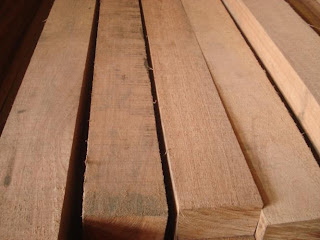The Process of Converting Wood into Industrial Wood Sawing

Wood is an important natural resource that has a wide range of applications, from construction to furniture-making and even paper production. Wood sawing, also known as sawmill, is one of the processes involved in the conversion of wood into different shapes and sizes that can be utilized for industrial purposes. In this article, we will discuss the process of converting wood into industrial wood sawing, the benefits, and tips to ensure a smooth process.
What is Wood Sawing?
Wood sawing is the process of cutting logs into different sizes and shapes using a saw. The saw can be powered by electricity, gasoline, or diesel fuel. A sawmill is a facility that houses the saw and the equipment needed to convert logs into different types of lumber, such as boards, planks, and beams. The lumber produced can be used for various commercial and industrial applications, including construction, furniture-making, and paper production.
Why is Wood Sawing Important?
Wood sawing is an essential process in the conversion of wood into products that can be used for industrial purposes. Without sawing, it would be challenging to utilize wood effectively, as logs are bulky and difficult to move around. With sawing, logs can be cut into smaller, more manageable sizes that can be used for different applications. In addition, sawing enables the utilization of different types of wood, each with unique properties that make them suitable for different uses.
The Benefits of Wood Sawing
There are several benefits to wood sawing. Firstly, it enables the conversion of a natural resource into an industrial product that can be utilized for different purposes. Secondly, sawing enables the utilization of different types of wood, each with unique physical and mechanical properties that make them suitable for different applications. Thirdly, sawing improves the efficiency of wood utilization by cutting logs into smaller, more manageable sizes that can be utilized for different applications. Lastly, sawing improves the safety of wood utilization by reducing the risk of accidents that can occur when working with bulky logs.
Ideas for Utilizing Wood Sawing Products
Wood sawing products can be utilized for various applications, including construction, furniture-making, and paper production. In construction, sawn lumber can be utilized for framing, decking, and roofing. In furniture-making, sawn lumber can be used for making tables, chairs, and beds. In paper production, sawn lumber can be used for making pulp and paper.
How to Ensure a Smooth Wood Sawing Process
To ensure a smooth wood sawing process, it is essential to ensure that the saw and the equipment used for cutting and handling logs are in good working condition. The saw should be properly sharpened and lubricated to reduce friction and increase efficiency. The equipment used for handling logs, such as conveyors and loaders, should be sturdy and efficient to ensure that logs are moved around safely and efficiently. Finally, it is essential to follow the proper safety procedures and protocols when working with saws and other equipment to reduce the risk of accidents.
Tips for Improving the Efficiency of Wood Sawing
To improve the efficiency of wood sawing, it is essential to ensure that logs are properly transported and stored before and during the sawing process. Logs should be stored in a dry, clean, and well-ventilated area to prevent rotting and cracking. It is also essential to ensure that logs are properly graded and sorted according to their quality and intended use to ensure that the proper sawing techniques and equipment are used. Finally, it is essential to ensure that the saw is properly adjusted and set up for the type of wood being sawed to ensure that the sawing process is as efficient and productive as possible.
The Different Types of Wood Used in Sawing
Meranti

Meranti is a type of hardwood that is commonly used in sawing. It is known for its durability and resistance to decay and insects. Meranti lumber is particularly suitable for outdoor applications, such as decking, framing, and fencing. It is also commonly used in furniture-making, particularly for decorative elements such as moldings and panels.
Ulin

Ulin is a type of hardwood that is native to Southeast Asia, particularly Indonesia. It is known for its density and durability, making it suitable for heavy-duty applications such as construction and marine applications. Ulin lumber is particularly suitable for making pilings, docks, and bridges.
Bekisting

Bekisting is a type of softwood that is commonly used in formwork for concrete structures. Softwoods are preferred for formwork due to their lower cost and weight compared to hardwoods. Bekisting lumber is particularly suitable for formwork due to its dimensional stability and ability to retain its shape after exposure to wet concrete.
In conclusion, wood sawing is an essential process in the conversion of wood into products that can be used for industrial purposes. It enables the utilization of different types of wood, each with unique properties that make them suitable for different uses. The process improves the efficiency and safety of wood utilization by cutting logs into smaller, more manageable sizes. To ensure a smooth and efficient sawing process, it is essential to ensure that the saw and the equipment used for cutting and handling logs are in good working condition. Additionally, logs should be properly transported and stored before and during the sawing process. By following proper safety procedures and protocols, it is possible to improve the efficiency and productivity of the sawing process while reducing the risk of accidents.












